





(Editor's Note: This article was originally published on March 30, 2009. Your comments are welcome, but please be aware that authors of previously published articles may not be able to promptly respond to new questions or comments.)
Planning ahead
Before you can even start scratching the cabin fever itch, you must figure out your area's predicted last frost date. A few good resources for ascertaining this elusive date are:
Victory Seed Last Frost Date
NOAA
Colorado specific
Don't forget though, that these are only averages of past recorded data. There is no guarantee that the dates will hold true. There is often several dates given, each corresponds to a certain probability like 50% or 90% accuracy.
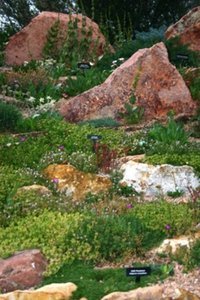
The Inevitable Seedbox Organizing Event
While you're in the planning stages, go through your seed box and become a little more organized. Go through your seeds and decide which ones you really want to start. Divide them into several groups: winter sowing, seeds that need to be started in the garden, seeds that need to be started 8 to 10, 4 to 6,or 2 to 3 weeks before last frost, and annuals that you just want to direct sow. This is a late January ritual for me and I place each group into a labeled zippered plastic bag for easy access.
Growing season
Another variable to take into account is your average growing season. That is, how many frost free days will your area have from spring to fall. While a lot of times this won't necessarily matter, like with perennials, you can bet that your plants won't all make as many leaps and bounds as they might in more temperate areas like the south or in California.
Growing season varies wildly within even proximally close locations in the Rocky Mountains. Where I live, Colorado Springs, the average growing season is 152 days, while a two hour drive southwest to Alamosa will net you a loss of 57 days to grow (95 days frost free) [1]. Unlike you might predict, Calgary's (Alberta, Canada) growing season is reported to be anywhere from 150 to 170 days[2]. How could it be that someone in zone 3 has the same growing season as I do in zone 6? Ah, the Rockies...
Mark the Calendar
Once you know these very important dates (last frost and predicted growing season), you can then begin to plan which seed you can and want to start. Physically marking a calendar with these dates can be helpful when planning seed starting. For most seeds, you can find a recommended start "date" that you can correspond with your growing calendar. For example, on the back of the seed packet of the Whipple's Penstemon I want to start this year, it is recommended that I start them 8 to 10 weeks prior to last frost date. I can count backwards from my last frost date to find out which week I should start this seed. In my area, depending on how optimistic I am (aka idiotic, idealistic, impractical), the date could be March 6 (10 weeks from the 50% date of May 15) or April 6 (8 weeks from the safer frost free date of June 1). A month leeway creates some opportunity for calamity, but if my seed starting operations are up to par, a little fudge time is okay.
If you are pausing with shock about not being able to start seeds until April 6, you are not alone. Patience has been one of my hardest learned lessons since moving to the Rocky Mountains. Last year it was crispy-cold tomato seedlings, the year before it was my whole seedling stock. I'm learning, if not slowly. Patience my friends: no one likes leggy, stunted or frozen seedlings.
While you're in your new seed starting calendar, why don't you go ahead and mark a few more important dates. Obviously mark the predicted last frost and first frost for the fall; if you know the last and first frost dates from last year maybe you should mark that, too. Mark down when you plan to start each batch of seeds: 8 to 10 weeks, 4 to 6 weeks, and 2 to 3 weeks. This will serve as a good reference tool when you are chomping at the bit later in spring.
The Hard Part
Nothing you've done so far is different than any other growing area, besides the gasps and pants in yearning for an earlier last frost date. Now the hard part begins.
More often than not, it's not the cold climate that does our plants in; it's the dry air, up and down temperatures, and wind that will spell the swift end especially for delicate seedlings.
Dry Air: In the Rockies, the frigid temperatures and dry air (ranging from 15% to 60% humidity)[3] lead to some chapped skin and some inhospitable conditions for seed starting. Not only is it hard to maintain a constant, heated atmosphere within a home, it is also nearly impossible to keep up humidity levels for burgeoning seedlings. Rarely will you have problems with damping off; more likely you'll struggle with keeping germinating seeds moist. Once seeds germinate, it is a daily struggle to keep up with transpiration to create healthy seedlings.
Be careful to check on the growing seedlings everyday, providing moisture through bottom watering and spraying them with a fine mist to increase the humidity. You can use plastic domes or plastic wrap to create a more affable environment for your seedlings. As the seedlings grow, make sure you allow them to have some circulation and natural air.
Temperatures: I don't know about you, but I have a hard time keeping my house at a steady temperature. With all the variation outside: it's -2 F one day and 46 F the next, my poor heater can't tell which way is up. A lot of seeds like a specific temperature to germinate, whether it is cold or warm, being able to monitor temperatures during germination will put you ahead of the game. Using seedling heat mats and thermostats will help you provide steady temperatures for your seeds.
This also creates a variable temperature for germinated seeds and has been known to stunt growth. Plants such as tomatoes and cilantro are very adverse to temperature sways. If you can find a room in your house where the temperature is somewhat constant and easy to manage, you will be more successful with your seedlings.
Hardening off: Before you can plant seedlings in the ground, you need to harden them off. This is a process of acclimating the young leaves to the sun, allowing them to build up a protective layer of wax and adapt to the "wild." Generally, hardening off can be accomplished by setting seedlings out in the shade for a week or so, increasing element exposure daily. Simple? Not the least bit when spring is arguably the windiest season in the Rockies. Seedlings quickly become Whirling Dervishes in our down-slope winds. You can discover ways to avoid this in your particular spot, but I recommend putting your seedlings out to harden in a protected part of your house such as the east or north sides. You can also create some kind of structure to protect them; I find that placing seedlings in deep cardboard boxes can protect them from strong winds. Any way that you protect them from the wind, you need to check on your seedlings daily and be sure not to leave them out when frost is predicted.
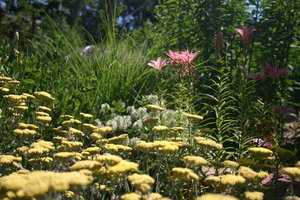
Resist the temptation
Without fail, mid to late April will bring sunny, park-going weather. People who live in the Rockies put up with sometimes less-than-desirable winters to relish spring and summer. For 6 months out of the year, our weather can be to die for. Short sleeves, open windows, no air conditioning units... then, BAM snow on May 11. As I write this article in January, even my stomach just dropped.
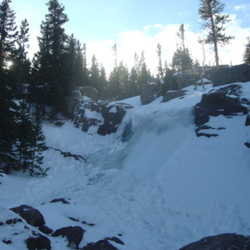
We must be careful not to jump the gun. Even though it may seem beautiful in April, May is a very unpredictable month in the Rockies. Freezing weather or snow can blow in at a moment's notice and kill everything you've worked for over the spring. Resist the temptation to plant your precious seedlings out too early. You would be best served to keep your seedlings in pots, increasing the size as they grow, rather than putting them into the ground. The ground is cold through April and early May, and may stunt your seedlings worse than if you let them grow in containers. You'll be able to move them inside easily if they are still in containers in case of frost.
Some other tricks to keep seedlings from getting hypothermia:
Cold Frames and Greenhouses: Cold frames are excellent to use for extending the growing season. The glass topped structures trap in heat from the winter sun, creating a greenhouse effect for young seedlings. They are easy to make and often recycle old windows. Greenhouses are also endlessly helpful to Rocky Mountain gardeners if they can be errected affordably.
Using warm structures: I have heard techniques of people surrounding delicate, in ground seedlings such as tomatoes with "brick walls." You can use extra bricks to build 4 walls around the seedling and during the day the bricks absorb heat and protect the seedling as the sun goes down. You of course can use blankets and plastic sheeting to cover seedlings in very light frost. You can also construct a lean-to against a protected outside wall of your home using PVC pipe and plastic sheeting.
Wall O Water, Kozy Koats, et al: These products are specifically made to help extend the growing season in cooler regions. Using different techniques, these products provide warmth to seedlings during the colder hours of the day. Though they can be somewhat expensive, these methods can provide peace of mind to your about your seedlings.
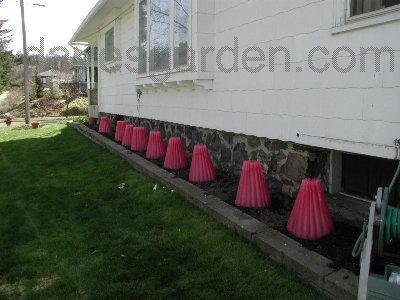
Strategic placement: Everyone can find some protected areas around their home. Using the shaded front stoop of your house or the protected north or east sides of your house can create a safe microclimate for growing seedlings.
The bottom line is that once you organize, accept and implement a few things into your seed starting repertoire, you can be an excellent Rocky Mountain gardener. It's not impossible, as I once thought when I first moved here. Gardening in the Rocky Mountains has as many challenges as anywhere else in the country. The best part is that we have the scenery of the Rocky Mountains in the background of whatever garden we choose to grow and that makes it all worth it.
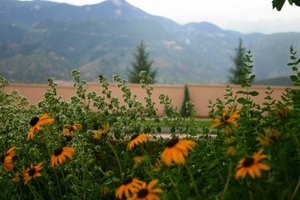
My disclaimer:
You might be thinking to yourself, "Susanne, what do you know about gardening in the Rockies? You've only lived here for 3 years..." To the skeptics, I would reply that it is true I haven't lived here long, but I have lived and gardened in what might be the polar opposite climate (Houston, Texas) and know how different things can be; everything I know, I've learned the hard way or from more experienced RM gardeners. In order to succeed here, I have had to read, study, and struggle to make things "work." I can see Rocky Mountain gardening for its basal issues, its perks and its lows, because I have known the reverse side of the coin. I hope you'll trust me and learn with me, as we navigate this "un-gardenable" (pshaw!) region.
Copyright © www.100flowers.win Botanic Garden All Rights Reserved